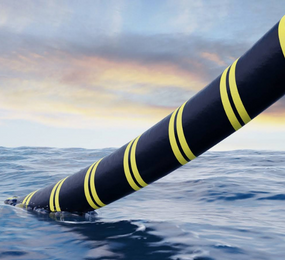The foundation of the global economy are supply chains. They have also become more complex, with hundreds of suppliers, service providers, production facilities, and distribution centres now dispersed throughout the world. Business-to-business networks must be constructed with resilience in mind since the ability of global supply chains to efficiently source and collaborate across trading partners is essential to life as we know it. Additionally, despite uncertainty, businesses are still able to supply the right goods at the appropriate times and locations and even outwit rivals.
Modern supply chains must be able to swiftly and effectively adapt their operations to manage through interruptions and even get ahead of them to lessen the impact of events even before they happen. Companies at the forefront of innovation are exploiting disruptions to improve business outcomes - not just revenue, but leaning into cost-optimization while exceeding customer expectations - with access to real-time, trusted data and a strong ecosystem of partners.
Proper supply chain risk strategies enable businesses of all shapes and sizes to take advantage of tried-and-true strategies that mitigate risk and set them up for success.
Supply chain risk strategies for achieving efficiency and resilience;
-
Looks for ways to improve supply chain visibility.
-
Track the right freight carrier metrics
-
Implement a logistics contingency plan
-
Leverage the PPRR risk management model. The “PPRR” stands for:
-
Prevention: Take preventative steps to reduce supply chain risk.
-
Preparedness:Create and implement a contingency plan in case of an emergency.
-
Response: Implement your contingency plan in order to lessen the effects of the disruptive occurrence.
-
Recovery: Resume operations and get things running at normal capacity as quickly as possible.
-
Manage environmental risk in your supply chain.
-
Multisource – Categorise your suppliers not just by what you’re spending, but also by potential impact if there’s a disruption.
-
Nearshore – Look to find suppliers and distributors closer to your centre of operation and/or the end point of your supply chain to reduce cycle times for product development and delivery.
-
Stress tests often – Comprehensive, and reoccurring, stress tests are the best way to check for vulnerabilities, some which may lie hidden deep within the supply chain.
-
Build buffers for inventory and capacity – To reduce climate-related environmental risks, consider stockpiling products during known periods of high risk (such as hurricane season).
-
Invest in product and plant harmonisation – Using the same software throughout your network, especially cloud-based architecture, reduces the inefficiency of siloed data and allows for better communication between systems.
-
Consolidate your data for easy access
-
Use data to model key risk event scenarios
-
Improve your cyber supply chain risk management.
-
Consistently monitor risk
-
Conduct internal risk awareness training
Making your supply chain more effective by using these techniques has numerous advantages that will benefit your company. You are likely to observe an increase in deadline delivery as a result of these approaches' efforts to cut lead times and prevent issues with product unavailability, which will ultimately lead to higher customer satisfaction. Return and loyalty from customers are the results of this.
Q: Which strategies influence the efficiency of retail supply chain management?
This will be dived deeper on 30th - 31st May, 2023 at the Supply Chain Risk and Resilience Forum, in Berlin, Germany so you don't feel left out in the industry!
To register or learn more about the Forum please check here: https://bit.ly/3DsfWE4
For more information and group participation, contact us: [email protected]
















